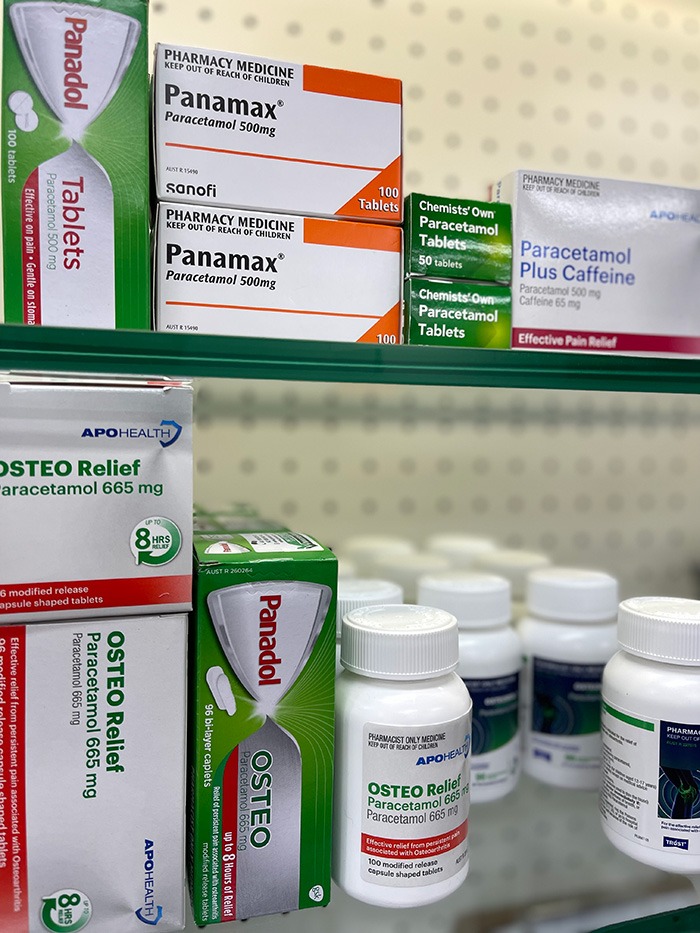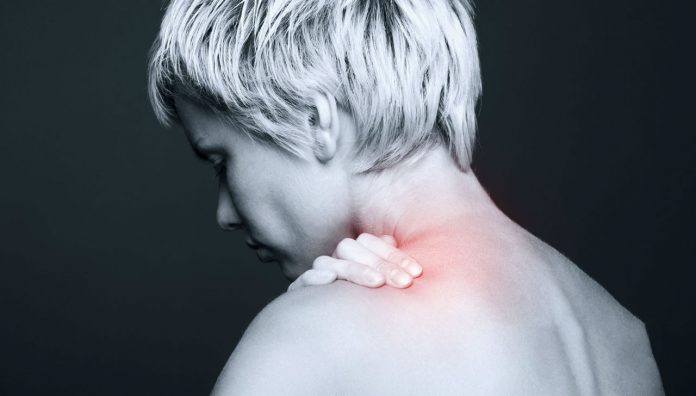Pharmacists play a vital role supporting patients with chronic pain.
Around 1 in 5 Australians experience chronic pain; this rises to 1 in 3 for people over 65 years of age. The prevalence of self-reported chronic pain peaks at 27% for males aged 65–69 years and 31% for females aged 80–84 years. The greatest impact on daily function occurs in those aged 55–59 years.1
Chronic non-cancer pain is characterised by pain that persists despite adequate time for healing and is often defined as pain that has been present for more than 3 months.2 It is associated with clinical, psychological and social consequences, including limitations in daily activities, lost work productivity, reduced quality of life and stigma. The primary goal of caring for a patient with chronic non-cancer pain is not the elimination of pain, but the improvement of function. Patients should receive appropriate pain treatment after careful consideration of benefits and risks of treatment options.3
Management of chronic pain is undergoing a paradigm shift, in recognition of the limited efficacy of opioids and risk of harms associated with their use.4,5 Opioids have a limited role in chronic pain management.6 The primary change in the management of chronic pain is towards a biopsychosocial approach and the use of non-pharmacological therapies.7,8
Chronic pain management should be patient centred and multidisciplinary. It may include both pharmacological and non-pharmacological treatments. Patients living with chronic pain must be regularly assessed by their general practitioner. Chronic pain often responds poorly to analgesics alone, and therefore requires a multidisciplinary approach, combining physical, psychological and pharmacological therapies.6
Pharmacists, as primary care providers, have a vital role in supporting patients’ pain self-management. They can monitor prescription dispensing and potential misuse of medicines (e.g. opioids), and provide education about management of adverse effects and appropriate use of medicines to reduce or prevent medicine-related harm.
Self-management issues
Self-management of chronic pain is the patient’s ability to manage their symptoms and treatment, as well as the physical and psychosocial consequences, and lifestyle changes required to live with chronic pain.9 Self-management strategies have been found to be effective for chronic pain. Pharmacists may identify barriers (known as red or yellow flags) displayed by patients with chronic pain that can contribute to long-term prognosis, and have an impact on recovery and treatment options.10
The presence of red flags suggests the need for further investigation, immediate referral to a general practitioner and possible medical specialist referral as part of an overall strategy. As an example, red flag indicators for back pain include:
- possible fracture (major trauma or minor trauma in older people or patients with osteoporosis)
- possible tumour or infection (people aged >50 or <20 years; history of cancer; constitutional symptoms such as fever, chills, weight loss; recent bacterial infection; intravenous drug use; immunosuppression; pain worsening at night or when supine)
- possible significant neurological deficit (severe or progressive sensory alteration or weakness; bladder or bowel dysfunction).
The presence of yellow flags may highlight the need to address specific psychosocial factors as part of a multimodal management approach. Examples of yellow flag indicators that may assist in identifying patients needing an intervention are11,12:
- an attitude to pain that it is harmful or potentially severely disabling
- reduced activity levels due to fear that activity will worsen the pain or cause re-injury
- belief that passive treatment (e.g. hot packs, cold packs, analgesics), rather than active treatment (e.g. physical exercise, yoga, breathing exercises), will be beneficial
- belief that treatment will worsen the injury and delay return to work
- depression, low morale, social withdrawal and anxiety (e.g. due to a poor workplace environment).
Medication-dependency issues
Medicines used to treat chronic pain are beneficial in about one-third of patients. Use of medicines should be assessed by the impact they have on the patient’s quality of life.6 Some medicines used to treat pain (e.g. opioids) are associated with dependency issues.
Pain location and characteristics
The pharmacist should accept the patient’s self-reported pain as accurate and the primary source of information.13 Patients should be allowed to describe their pain in their own words. The pharmacist should listen actively to what the patient says. Information gathering, using standardised pain assessment tools, may suggest issues to be addressed by other healthcare providers.
Characteristics of pain are an important part of a pain assessment because they may assist in the selection of appropriate treatment. Sensory descriptors (e.g. sharp, throbbing, aching) can assist in assessing neuropathic and nociceptive pain conditions.14
Communication with patients
It is important that pain communication is undertaken in an empathetic, non-judgmental manner that considers patient literacy and culture. Validation of pain-related thoughts and feelings may have significant implications for pain-related outcomes.14 Many patients with chronic pain believe that others do not understand their pain or even consider their pain condition to be legitimate. These beliefs are likely to increase psychological distress and negative affect. It is possible that validation of pain-related thoughts and feelings for these patients may lead to reductions in negative affect.
| This article has been excerpted from: ‘Guidelines for pharmacists providing services for the Chronic Pain MedsCheck trial’. The Chronic Pain MedsCheck trial service is a structured and collaborative clinical pharmacy service that takes place in a community pharmacy to optimise the management of chronic non-cancer pain, and improve patient health outcomes and quality of life. Find out more, and see all references, at: www.my.psa.org.au/s/article/Chronic-Pain-MedsCheck-Guidelines |
References
- Blyth FM, March LM, Brnabic AJ, et al. Chronic pain in Australia: a prevalence study. Pain 2001;89(2–3):127–34. At: https://www.ncbi.nlm.nih.gov/pubmed/11166468
- Neilson AR, Bruhn H, Bond CM, et al. Pharmacist-led management of chronic pain in primary care: costs and benefits in a pilot randomised controlled trial. BMJ Open 2015;5:e006874. At: https://bmjopen.bmj.com/content/bmjopen/5/4/e006874.full.pdf
- Australian and New Zealand College of Anaesthetists. National pain strategy: pain management for all Australians. 2010. At: painaustralia.org.au/improving-policy/national-pain-strategy
- Chou R, Turner JA, Devine EB, et al. The effectiveness and risks of long-term opioid therapy for chronic pain: a systematic review for a National Institutes of Health pathways to prevention workshop. Ann Intern Med 2015;162(4):276–86. At: https://www.ncbi.nlm.nih.gov/pubmed/25581257
- Manchikanti L, Ailinani H, Koyyalagunta D, et al. A systematic review of randomized trials of long-term opioid management for chronic non-cancer pain. Pain Physician 2011:14(2):91–121. At: https://www.ncbi.nlm.nih.gov/pubmed/21412367
- Analgesic Expert Group. Analgesic, version 6. In eTG complete. Melbourne: Therapeutic Guidelines; 2018. At: https://tgldcdp.tg.org.au/
- Duenas M, Ojeda B, Salazar A, et al. A review of chronic pain impact on patients, their social environment and the health care system. J Pain Res 2016;9:457–67. At: https://www.ncbi.nlm.nih.gov/pmc/articles/PMC4935027/
- NPS MedicineWise. Chronic pain. At: nps.org.au/medical-info/clinical-topics/chronic-pain
- Bair M, Matthias MS, Nyland KA, et al. Barriers and facilitators to chronic pain self-management: a qualitative study of primary care patients with comorbid musculoskeletal pain and depression. Pain Med 2009;10(7):1280–90. At: https://www.ncbi.nlm.nih.gov/pubmed/19818038
- Hancock M. Approach to low back pain. Aust Fam Physician 2014;43(3)117–8. At: https://www.racgp.org.au/afp/2014/march/physiotherapy/
- Nicholas MK, Linton SJ, Watson PJ, et al. Early identification and management of psychological risk factors (‘yellow flags’) in patients with low back pain: a reappraisal. Physical Therapy 2011;91(5):737–53. At: https://www.ncbi.nlm.nih.gov/pubmed/21451099
- Samanta J, Kendall J, Samanata A. Chronic low back pain. BMJ 2003;326(7388):535. At: https://www.bmj.com/content/326/7388/535
- Powell RA, Downing J, Ddungu H, et al. Pain history and pain assessment. In: Kopf A, Patel NB eds. Guide to pain management in low-resource settings. Seattle: International Association for the Study of Pain; 2010. At: https://s3.amazonaws.com/rdcms-iasp/files/production/public/Content/ContentFolders/Publications2/FreeBooks/Guide_to_Pain_Management_in_Low-Resource_Settings.pdf
- Edmond SN, Keefe FJ. Validating pain communication: current state of the science. Pain 2015;156(2):215–19. At: https://www.ncbi.nlm.nih.gov/pubmed/25599441



 Pharmacists can help to reduce the amount of surplus paracetamol available in homes by being ‘champions for the change’, said Peter Guthrey MPS, PSA Senior Pharmacist – Strategic Policy.
Pharmacists can help to reduce the amount of surplus paracetamol available in homes by being ‘champions for the change’, said Peter Guthrey MPS, PSA Senior Pharmacist – Strategic Policy.

 What are the main vaccine-preventable diseases of concern for VFR travel?
What are the main vaccine-preventable diseases of concern for VFR travel?

 Professor Melissa Baysari[/caption]
Professor Melissa Baysari[/caption]
 Michael Bakker MPS[/caption]
Michael Bakker MPS[/caption]









